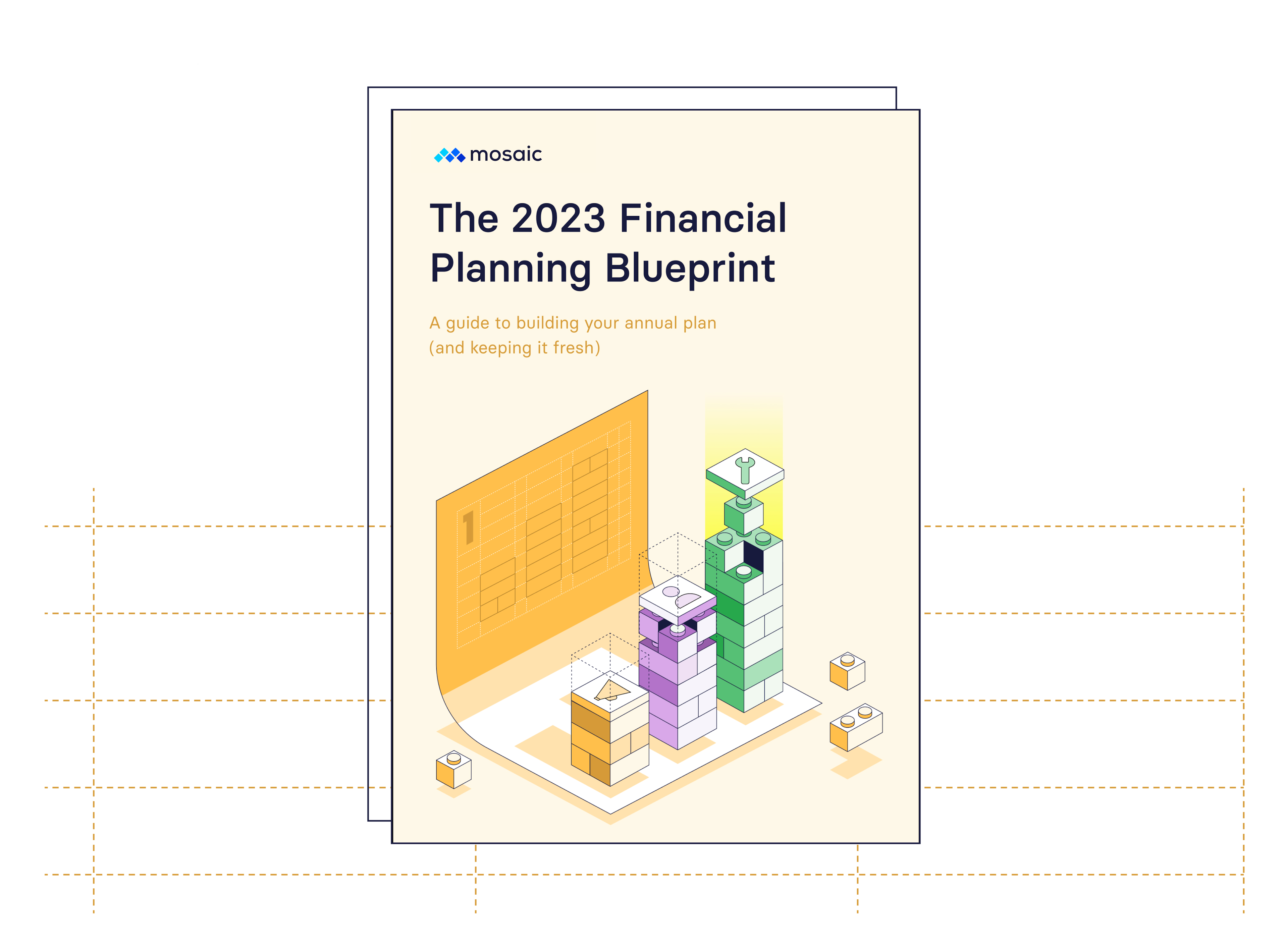So far, the early 2020s have shined a massive spotlight on at least one trend in finance—the need to adopt a rolling forecast for planning and flexible budgeting.
No matter how solid your plan felt going into this decade, it almost certainly went out the window when the pandemic hit, or when supply chains got derailed, the mass resignation struck, inflation rose to all-time highs, or when war broke out in Europe. We can hope that these kinds of unprecedented events are once-in-a-lifetime occurrences, but the problem of inflexibility in annual planning remains.
The modern finance team has to be agile. But annual plans limit agility because they take a month to nail down and don’t adjust to changing market conditions.
Embracing the rolling forecast gives your finance team the flexibility to keep pace with business changes—but only if you have the proper infrastructure in place to support an agile planning process.
Table of Contents
What Is a Rolling Forecast?
A rolling forecast is a financial planning tool that helps organizations continuously predict their future outcomes. They typically run on time horizons of 12, 18, or 24 months, allowing finance teams to update projections monthly or quarterly based on their most up-to-date actuals.
3 Benefits of Rolling Forecasts
The main goal of a rolling forecast is to make your financial modeling, planning, and budgeting process more dynamic. There are a few main reasons why they’re well-suited to meet that goal.
1. They’re Driver-Based
Rolling forecasts hinge on operational events rather than financial outcomes alone. They work backward from operational metrics, tracking the critical KPIs that directly impact business performance and cash flow. This approach to driver-based planning and financial assumption construction leads to more accurate predictions and creates a foundation for agile forecasting.
2. They Support More Dynamic Scenario Planning
Rolling forecasts forward on a monthly or quarterly basis allows finance teams to map out scenarios in a more strategic way. As updated actuals come in, you can break the new baseline forecast into multiple scenarios for headcount planning, topline, and expenses, accounting for best-case and worst-case projections. Instead of only comparing everything back to the annual plan, you get a more dynamic, event-based view of the business.
3. They Enable Proactive Resource Allocation
Rolling forecasts provide a more actionable foundation for budget variance analysis. Getting more up-to-date insight into where your business is on target and where it’s missing on financial outcomes helps you align with department leads more effectively. Instead of reporting on how accurate your annual plan is, you can have more granular conversations about how changes in resource and budget allocation could improve performance.
At the most basic level, forecasting is about predicting future financial outcomes for your business. But the end goal of the planning process isn’t just to see whether or not you reach 95% accuracy and hit your numbers—it’s to influence business strategy.
Rolling forecasts give you the real-time perspective necessary to go from reporting on whether or not your predictions were correct to providing actionable recommendations for meeting company goals.
Rolling Forecasts vs. Traditional Budgets
The traditional budget is an annual plan you calculate for the fiscal year based on the previous year’s historical data. Compared to rolling forecasts, traditional incremental budgeting is the de facto standard for financial planning. Instead of continuously updating the plan with a rolling forecast, the traditional processes have finance teams work with individual departments to create a static view of the company’s revenue and expense projections.
But the traditional budgeting and forecasting process has been problematic for decades. In 1995, Jack Welch, then-CEO of General Electric, called it “the bane of corporate America.”
And it’s only gotten worse 25+ years later. Now, businesses (especially high-growth startups) evolve too quickly to rely solely on a static budget that becomes obsolete almost immediately after you finalize it.
The Problem With Traditional Budgets
Two primary problems come with measuring your business only against a traditional budget:
You aren’t working with an accurate view of the business
An annual budgeting process requires non-finance leaders to forecast spending a year or 18 months ahead of time. More often than not, accuracy is wishful thinking. The further you get from the initial planning process, the more your business changes and the less accurate those projections become.
Teams start treating the budget as an end goal
Your budget is supposed to be a plan for pursuing specific financial outcomes for the business—a means to an end. But traditional budgeting incentivizes departments to sandbag the plan, requesting more money than necessary as a way to safeguard their future or spend unnecessarily toward the end of the year to hit their projected numbers.
Rolling forecasts support a continuous planning process that eliminates these concerns. But that doesn’t mean you should ditch your annual plan altogether.
Rolling Forecasts and Annual Plans Are Better Together
Even though the pandemic revealed the glaring weaknesses of annual planning, it’s important not to think about adopting a rolling forecast process as an either/or situation. Rolling forecasts and annual plans are better together because they provide a perfect balance between short-term flexibility and long-term goal setting.
The annual plan remains the cornerstone of the budgeting process. It’s the guidepost for where you want the business to go. And modern CFOs must hold themselves (and their companies) accountable to those goals even as they do rolling forecasting.
A rolling forecast gives finance teams the kind of real-time insight necessary to provide actionable, strategic insights that guide the business forward. And continuous accountability to initial assumptions in the annual plan helps build trust with business stakeholders and connect with investors during board meetings (see our guide on how to prepare your board deck for more info).
Together, they help you paint a better picture of the “why” behind your financial data instead of just reporting on the numbers. Without that complete picture of short-term accuracy and long-term strategic vision, you risk turning your strategic budgeting process into the traditional kind of process that causes frustration for finance teams and department leaders alike.
Create Accurate Rolling Forecasts with Real-Time Data
How to Create a Rolling Forecast (Without Excel)
It’s easy enough for any FP&A pro to build a rolling forecast in Excel. But spreadsheet-related pain points prevent finance teams from fully embracing a more agile planning process.
The time-consuming process of continuously updating the plan and adjusting assumptions often leaves finance teams looking at stale actual results (which defeats the purpose of a rolling forecast). And because version control is such a problem in spreadsheets, you don’t have as much flexibility to plan out scenarios that provide strategic insights for business decision-making. Even if your team is able to complete the complex task, you’ve likely opened the Pandora’s box of version control issues.
Finance teams struggle to shift to agile planning and rolling forecasts when they build the process around spreadsheets and complex business intelligence tools. To make the process work, you need a more modern financial planning tool that provides real-time insight into actuals and helps you model scenarios in minutes rather than hours or days.
The Mosaic Strategic Finance Platform sets you up to follow rolling forecast best practices by:
- Making it easy to plan around value drivers. Automating the data collection and cleansing processes frees finance up to focus more on deciding which business drivers to build forecasts around. Collaborating with business partners to get a fundamental understanding of company goals, department plans, and operational metrics gives you the insight needed to choose drivers that will maximize forecast accuracy.
- Being flexible with the granularity of line items. Not every piece of the rolling forecast needs account-level granularity. But when you need to dig into the “why” behind budget variance, it needs to be easy to get deep insight into specific line items. Mosaic lets you update plans to get that granular view in a few clicks rather than forcing you to rebuild aspects of your forecast models.
- Locking in models for easy scenario planning. The best way to think about a rolling forecast is to have one active model you save from period to period. Regardless of the time horizon you choose, you always have that copy of the initial forecast. From that baseline, you can start changing components of the model, building new scenarios, and comparing forecasts side-by-side. Mosaic gives you the flexibility to make as many scenarios as you want based on the rolling forecast and annual plan you’re using as a baseline.
- Automatically pulling in actuals. In the past, bringing in actuals from your ERP and overlaying them in your model took a significant amount of time and effort. One wrong move, and your model would break. With Mosaic, actuals sync at the click of a button.
Maintaining a tight balance between annual budgets and rolling forecasts is the best way to project future performance and create a roadmap for business growth. Implementing the right infrastructure and technology is the first step to making that happen.
Make Better Decisions with a Rolling Forecast
Continuous planning, rolling forecasting, agile finance—it’s all key to better decision-making in your business.
But these have been hot-button topics in finance for years. Forcing the issue with outdated technology and processes may work for a little while. However, a rolling forecast can quickly become a mess of complexity, inaccuracy, and costly manual work without the right tools.
Mosaic is purpose-built to help you create financial plans and real-time reports to keep pace with the business. Get a personalized demo to find out how it can help you build a foundation for effective rolling forecasts.
Rolling forecast FAQs
What is the difference between a budget and a rolling forecast?
Budgets are static annual plans, while a rolling financial forecast model is regularly updated throughout the forecast period‘s time frames. Rolling forecasts are driver-based and allow for dynamic scenario planning, leading to more accurate forecasting.
What are the advantages of rolling forecasts?
How do you implement a rolling forecast?
Own the of your business.


